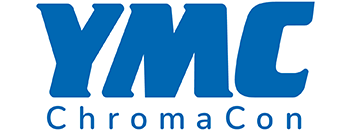Process Modeling
ChromaCon offers process modeling services for different processes operated with Contichrom systems.
Modeling for chromatographic process simulation, optimization and validations
Process modeling tools are increasingly being used to facilitate process development of biopharmaceutics. ChromaCon is currently offering process modeling as a service for single and twin-column chromatography processes, soon to be followed by simulation software packages integrated into our ChromIQ operating software. Process modeling allows to speed-up process development by predicting chromatograms and process performance. Using modeling, chromatography processes can be optimized, minimizing tedious experimental work and saving precious feed material. The tools are used together with a reduced number of DoE experiments to define the operating space. The process models are based on established physico-chemical relationships describing mass balances, mass transfer and adsorption equilibria.
Step 1: Fitting
The chromatographic models used for prediction and optimization are calibrated using a small number of single column chromatography runs using a fitting tools.
In capture chromatography the fitting tool utilizes breakthrough curve data to calibrate the model parameters taking into account the impact of titer, loading flow rate and bed height for the selected resin.
In polishing chromatography the fitting tool uses data from gradient chromatography experiments to calibrate the model parameters as a function of the gradient slope, the load, bed height and other parameters.
The fitting tools can utilize multiple sets of experimental data to improve the quality of model parameter determination. Having established the model parameters, the models are ready for simulation of additional runs and for process optimization.
Step 2: Process simulation
The chromatographic models can be used for simulation of single and twin-column chromatography processes. Inputs such as feed concentration, load volume, run protocol and gradient slope can be chosen. The simulations predict the chromatographic profiles and the associated product yield, purity, productivity, buffer consumption and product concentration. The run simulation only takes a fraction of the corresponding actual experiment's time and can be used to rapidly screen for a number of process conditions. For polishing chromatography, linear gradients and the purification of up to 5 components (1 product, 4 impurities) can be simulated.
Step 3: Process optimization
The chromatographic models can be used further to carry out process optimization for capture and polishing steps. Thereby the parameters are varied within user-specified ranges to find the optimal parameter combinations. The optimization is carried out using genetic algorithms. The objective for capture chromatography is optimization of productivity and resin utilization. In polishing chromatography the objective is the optimization of yield and purity. The output of the optimization is a list of the optimal runs including their operating parameters and process performance.
Step 4: Modeling for process characterization and validation
Modeling and simulations can be used to significantly speed up process characterization and validation while at the same time achieving a high level of process understanding. Modeling is compatible with traditional risk-based approaches, using process description, risk analysis, Design-of-Experiments (DoE) for high-ranked process parameters, and statistical analysis as essential elements. Following risk analysis, modeling can be used to complement experimental DoE studies, exploring the design space of high-ranked process parameters for batch and continuous chromatography processes. Thereby the model substitutes experimental runs by computer simulations allowing to rapidly determine feasible process conditions with acceptable process performance. Experimental verification can then be focused only on the feasible process conditions identified by the model, massively reducing experimental effort. At the same time, the model can be used to verify and optimize the design space of high-ranked process parameters.
The presented approaches contain essential elements of FDA's process validation guideline.


